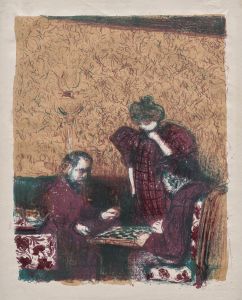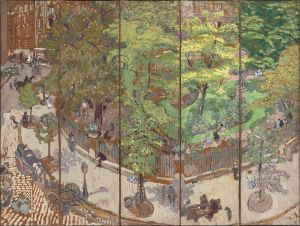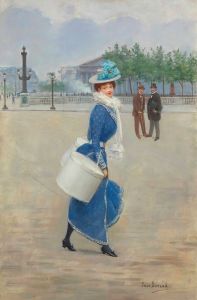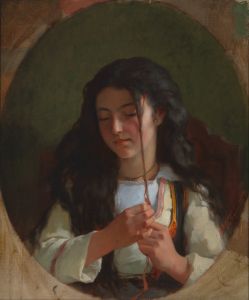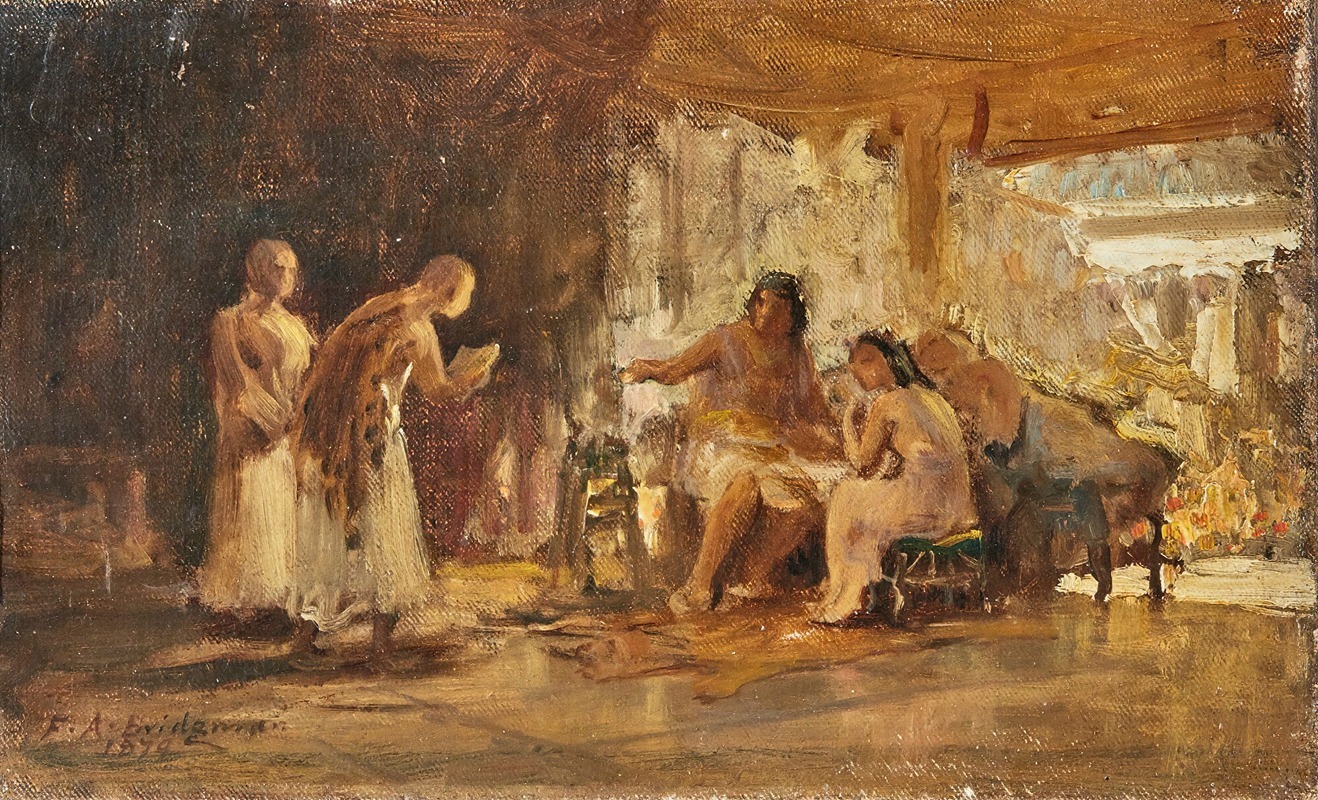
Study Of A Group In An Interior
A hand-painted replica of Frederick Arthur Bridgman’s masterpiece Study Of A Group In An Interior, meticulously crafted by professional artists to capture the true essence of the original. Each piece is created with museum-quality canvas and rare mineral pigments, carefully painted by experienced artists with delicate brushstrokes and rich, layered colors to perfectly recreate the texture of the original artwork. Unlike machine-printed reproductions, this hand-painted version brings the painting to life, infused with the artist’s emotions and skill in every stroke. Whether for personal collection or home decoration, it instantly elevates the artistic atmosphere of any space.
Frederick Arthur Bridgman was an American artist known for his detailed and evocative depictions of Orientalist themes. Born in Tuskegee, Alabama, in 1847, Bridgman moved to Paris in 1866 to study art, where he became associated with the Orientalist movement. His works often reflect his travels in North Africa and the Middle East, capturing the exoticism and allure of these regions through a Western lens. Bridgman's paintings are characterized by their meticulous attention to detail and vibrant use of color, which bring to life the scenes he observed during his travels.
"Study Of A Group In An Interior" is one of Bridgman's works that exemplifies his skill in rendering intricate scenes with a focus on cultural and architectural elements. While specific details about this particular painting are scarce, it can be inferred from Bridgman's broader body of work that the painting likely features a group of figures in an interior setting, possibly reflecting the artist's interest in the daily life and customs of the people he encountered during his travels.
Bridgman's paintings often depict scenes of leisure and domesticity, capturing moments of everyday life with a sense of intimacy and authenticity. His works are known for their rich textures and the careful depiction of fabrics, furnishings, and architectural details, which provide a glimpse into the environments he sought to portray. This attention to detail not only demonstrates Bridgman's technical skill but also his dedication to accurately representing the cultures he admired.
The Orientalist movement, of which Bridgman was a part, was characterized by Western artists' fascination with the cultures of the Middle East and North Africa. This movement often romanticized and idealized these regions, presenting them as exotic and mysterious. Bridgman's work, while part of this movement, is noted for its attempt to portray the subjects with respect and a degree of realism, avoiding some of the more fantastical elements that characterized the works of other Orientalist artists.
Throughout his career, Bridgman received numerous accolades for his work. He exhibited at the Paris Salon and was awarded several honors, including the prestigious Legion of Honor from the French government. His paintings were well-received by both critics and the public, and he enjoyed considerable success during his lifetime.
Today, Bridgman's works are held in various collections around the world, including major museums and galleries. His paintings continue to be appreciated for their artistic merit and their contribution to the understanding of the Orientalist movement. "Study Of A Group In An Interior," like many of Bridgman's works, offers viewers a window into a world that fascinated Western audiences of the 19th century, while also providing insight into the artist's own experiences and observations.
In summary, while specific information about "Study Of A Group In An Interior" is limited, it is representative of Frederick Arthur Bridgman's broader oeuvre, which captures the beauty and complexity of the cultures he encountered with a blend of artistic skill and cultural sensitivity.







